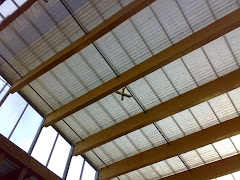Stay fix (SF) on the other hand takes a subtly but radically different approach. When the mistake happens the ‘stay fixer’ will wonder “why?” In other words they will wonder what elements of the system (the whole system) made it likely that that particular mistake would occur... They are thinking about prevention. The mistake still has to dealt with of course but at this point, the stay fixer spins out and seeks to fix the system and put in place changes that reduce the chances that a similar mistake will happen in the future. At this point prevention is done (not just considered) and so work becomes easier and indeed people begin to work smarter not harder.
In any organisation, activity can be classified as QF, SF
or Doing the Business (DTB) where the service / process happens as it should do
with no mistakes occurring. Hence an audit of QF/SF/DTB can be conducted. When
organisations have done this, they often find that vast amounts of money, time
and stress are expended on a combination of QF and SF – sometimes up to 20% or
even 40% of the overall budget.
But a choice then emerges. Do you want to carry on
spending vast amounts of resource on this ‘cost of failure’ or do you want to
invest in SF in order to bring down the costs of QF. Ultimately if you do this
well, there can be massive savings in QF costs, even SF costs which in turn
bring down the overall cost to the organisation. Not only is the organisation
more efficient, it is more effective, economic and indeed elastic (since good
SF builds in versatility to changing contexts too). And if SF is done ‘with’
the whole system, rather than ‘to’ it, more energy and commitment is released
as well.
However there are a couple of big(ish) problems. The reductions in QF take time to come to fruition. Also investing in SF is a bit like stoking a steam train engine, it takes a while to gather speed. As a consequence, the overall cost to the organisation goes up before it can come down. This is always the case. QF savings do not magically appear without some effort. There is no easy solution to this but the only one which can work, in my experience, is prioritisation of the SF activity. For example avoid trying to reengineer all of your processes in one go – instead select a couple where some early gains are possible which then gives you some commitment and slack to move onto the next and the next and so on. This is why strategic planning is so very important as it helps an organisation select where to invest its SF activity.
There is another significant problem too. Thinking of the
QF and SF loops, there is a small tunnel from thinking about prevention back
into “you can’t win ‘em all”. People often go through this tunnel when they say
things like “I am so busy right now, I don’t have time to think about the wider
system, I will do the prevention task a couple of years from now, when I am not
busy...”
Blocking off this tunnel requires leadership. This
leadership must:
- Role model SF practice (which is hard for the leaders who have been promoted on the strength of QF ability)
- Provide structures, tools and techniques to educate, enable, empower, support and inspire people to work in a SF way (such that QF becomes the work equivalent of leaving home without brushing you teeth!)
In these current times when resources are going to get
ever tighter, the need for investing in SF to bring down the costs of QF has
never been greater. However, one can imagine the costs of an organisation laid
out as three blocks: DTB, SF and QF. The shrewd leaders and managers will
identify where the QF costs are and tackle them one by one. The less shrewd
leaders who are in a hurry to sacrifice the future for the price of today will
cut horizontally as it were and slice through DTB and SF as well as portion of
QF. This will damage the short and long term capability of the organisation as
well give up the opportunities to be had from investing in SF. It will also
cost more in the long term.


Perhaps one key measure of how shrewd & strategic a leader is, in this current context, will be the angle of the cut: somewhere between horizontal and vertical.
What is your angle?













.jpg)


